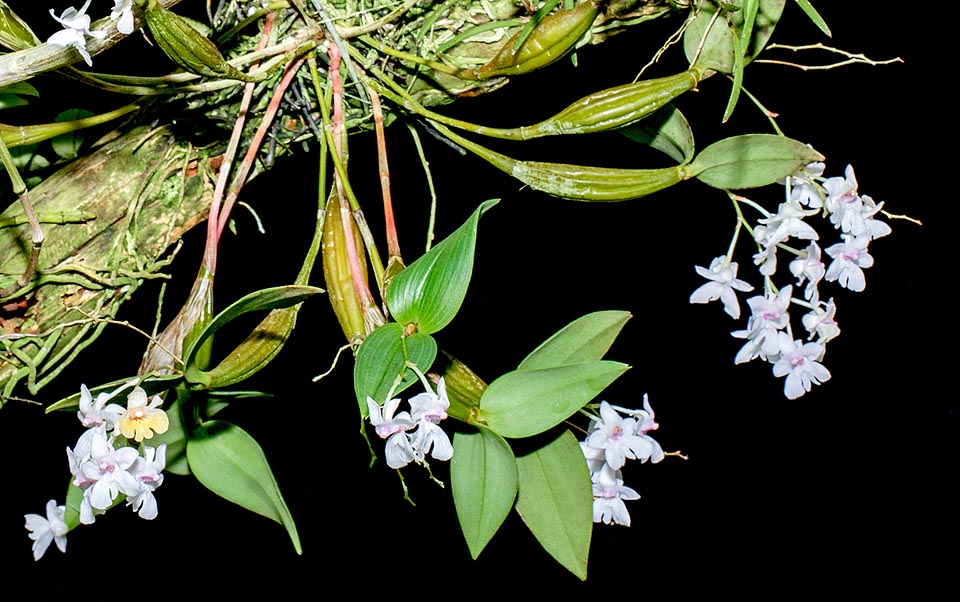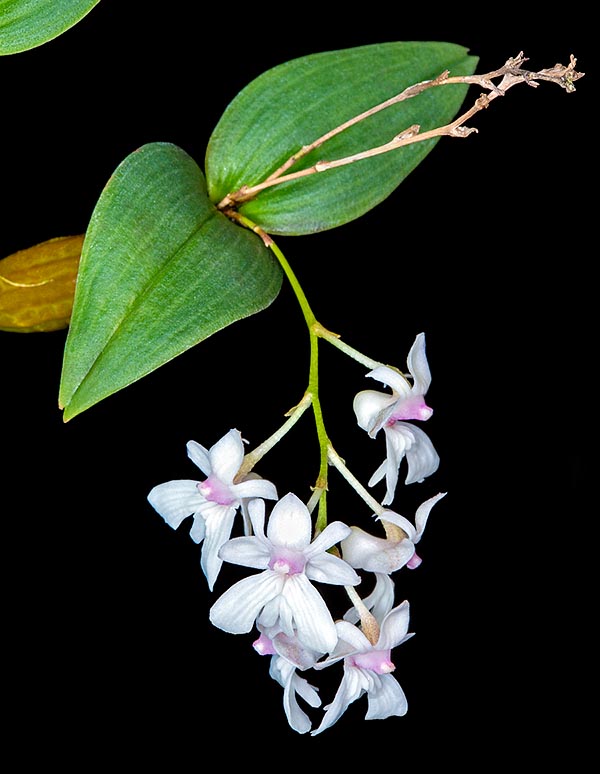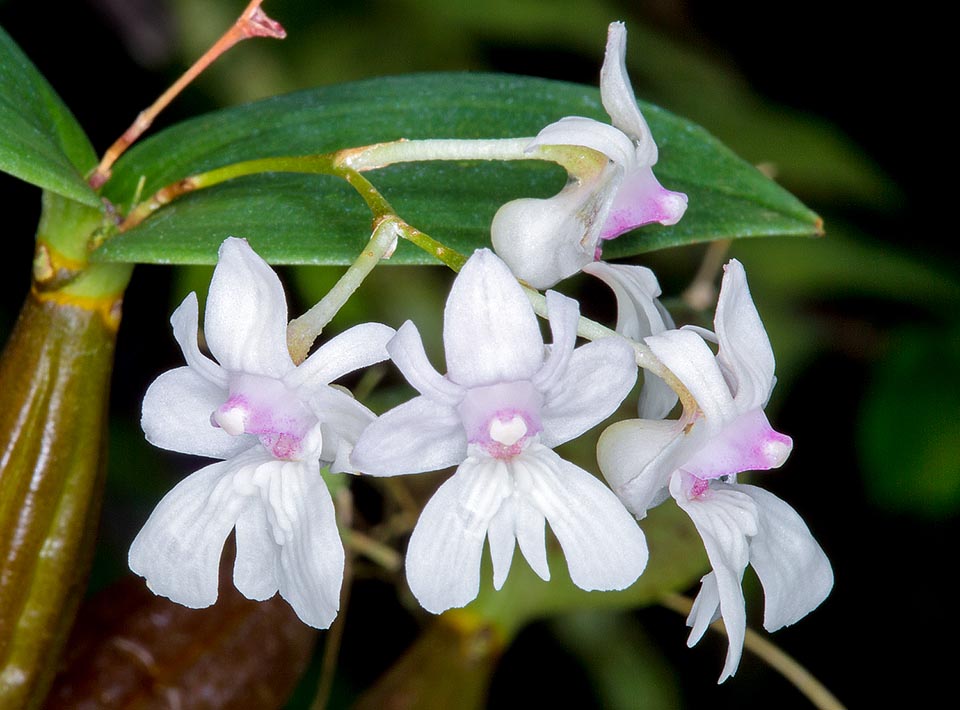Family : Orchidaceae

Text © Pietro Puccio

English translation by Mario Beltramini

Short rhizome epiphyte, Dendrobium aberrans is a miniature orchid of the humid forests of Papua New Guinea, between 300 and 1800 m of altitude © Giuseppe Mazza
The name of the genus is the combination of the Greek substantives “δένδρον” (dendron) = tree and “βίος” (bios) = life, with reference to the numerous species of the genus living on the trees; the specific name is the Latin present participle “aberrans, -antis” = wandering, from the verb “aberro” = to wander.

2-6 cm leaves and ascending or drooping, 7-10 cm racemose inflorescences © Giuseppe Mazza
Ascending or drooping racemose inflorescences at the axil of the leaves, 7-10 cm long, with 2-6 flowers, of 1,2-1,5 cm of diameter, of bright white colour, cream white or white with pink shades, produced on the new as well as on the old pseudobulbs, lasting about 3 weeks. Oblong sepals, with obtuse apex, 0,5-0,7 cm long, well spread, the lateral two united at the base to form an obtuse spur (mentum) 0,5 cm long.
Obliquely lanceolate petals with acute apex and margins minutely ciliate-serrate, slightly retroflexed, 0,55 cm long, trilobed labellum, 0,4-0,6 cm long, with wide lateral oblong falcate lobes with obtuse apex and oblong median lobe with bilobed apex. Pedicel and ovary 1,3-1,5 cm long.
It reproduces by seed, in vitro, and by division, with each section provided of at least 3-4 pseudobulbs.
Miniature orchid of relatively easy cultivation, remontant, requires high luminosity, even some hours of direct morning sun in winter, intermediate temperatures, 18-30 °C, with lowest winter ones preferably not less than 15 °C, and a good daily thermal excursion to stimulate the blooming, high humidity, 75-90 %, and constantly moving air.
Regular and abundant waterings during the phase of growth, preferably in the morning and avoiding stagnations on the emerging vegetation, easily subject to rottenness, more spaced in winter, but without ever allowing the substratum to dry up completely, utilizing rain water, demineralized or by reverse osmosis. Monthly fertilizations, from spring to autumn, utilizing a product specific for orchids diluted at the 30-50 % in respect to the dosage indicated on the package.

They bear 2-6 flowers of 1,2-1,5 cm of diameter, lasting about 3 weeks. Easy to cultivate © Giuseppe Mazza
The species is reported in the appendix II of the CITES (species whose trade is internationally ruled).
Synonyms: Sayeria aberrans (Schltr.) Rauschert (1983).
→ For general notions about ORCHIDACEAE please click here.
